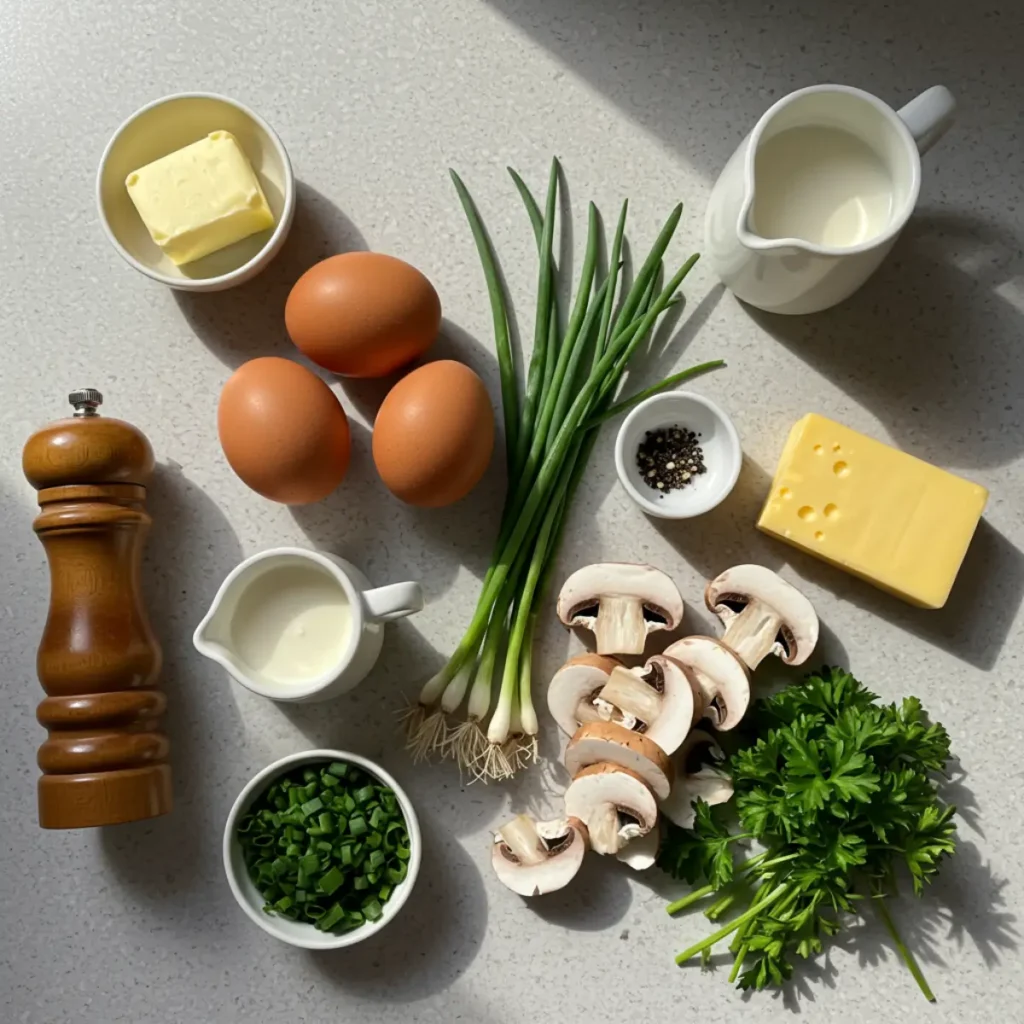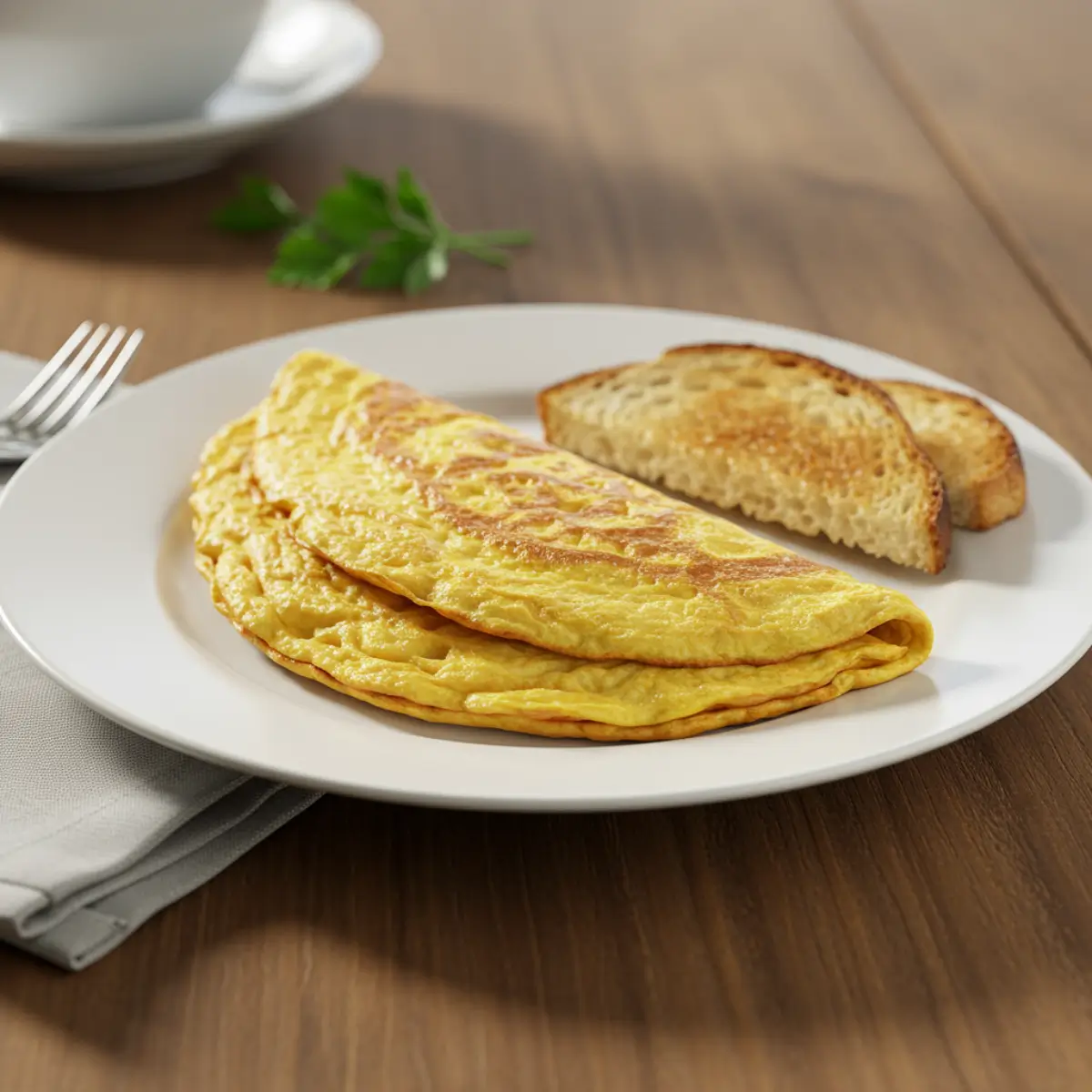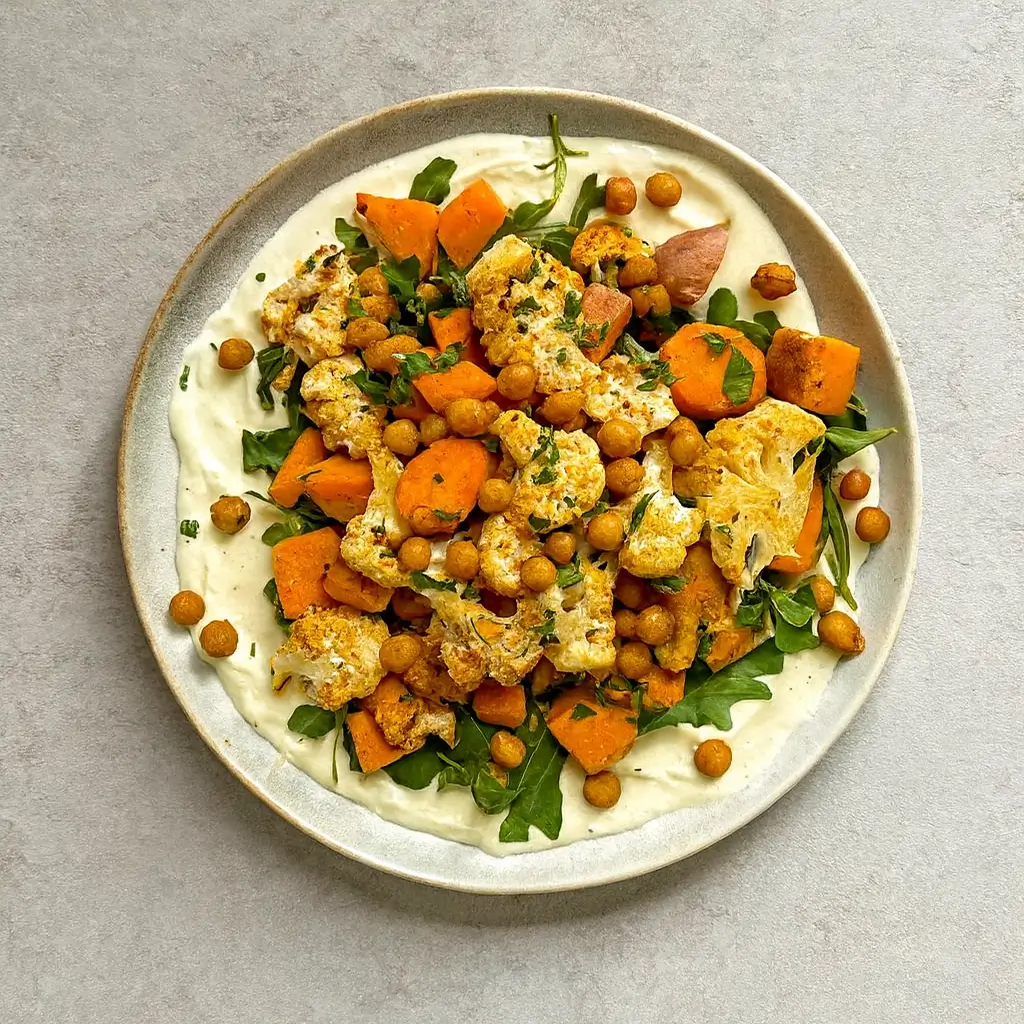Gordon Ramsay Omelette—three little words that can turn a chaotic morning into a chef-worthy moment. If your typical breakfast involves cereal that screams “meh” or eggs that end up rubbery, it’s time to shake things up. This recipe breaks down Gordon Ramsay’s French-style technique step by step. The result? A soft, custard-like omelet that practically melts in your mouth. The best part? You don’t need to be a Michelin chef to pull this off. Just grab a pan, three eggs, and a touch of patience. Whether you’re feeding a picky teen, making brunch for your partner, or just carving out five peaceful minutes for yourself, this Gordon Ramsay omelette will become your go-to breakfast ritual.
Table of Contents
What is a Gordon Ramsay Omelette?
A Gordon Ramsay Omelette is nothing like your typical diner-style dish. It’s a soft, silky French omelette—creamy inside, without any brown crust or dry bits. Gordon’s method skips the over-flipping and focuses on low heat, constant stirring, and gentle folding. The end result? An omelet that’s almost custardy, like a warm egg cloud cradled on your plate. It’s perfect for mornings when you want something elegant but achievable. No fuss, no fluff—just the kind of eggs that make you want to sit down and savor every bite. Bonus: it’s endlessly customizable, whether you love it plain or packed with cheese, herbs, or veggies.
Reasons to Try Gordon Ramsay Omelette
Let’s be honest: eggs can go wrong—fast. They overcook, they rubberize, or they stick like a clingy ex. But the Gordon Ramsay Omelette flips that script. It’s ready in under 10 minutes, needs just a handful of ingredients, and tastes like something you’d get at a fancy French café. It’s great for anyone juggling school runs, Zoom calls, or picky eaters who “don’t like the yellow part.” Plus, it works for breakfast, lunch, or even a light dinner when you’re too tired to cook. And if you’re a fan of Ramsay recipes, this dish pairs beautifully with his braised cabbage or a side of pan-fried salmon.
Ingredients Needed to Make Gordon Ramsay Omelette

The beauty of a Gordon Ramsay Omelette lies in its simplicity. It’s all about using quality ingredients and treating them with care. No fancy tools. No hard-to-pronounce cheeses. Just eggs, butter, and a touch of technique.
Here’s what you’ll need for a seriously satisfying omelet:
| Ingredient | Quantity | Purpose |
|---|---|---|
| Large Eggs | 3 | The star of the show. Make sure they’re fresh—they whisk better and cook creamier. |
| Unsalted Butter | 1 tbsp | Adds richness and prevents the eggs from sticking. You can use salted butter, but taste before adding any extra seasoning. |
| Heavy Cream (Optional) | 1 tbsp | Ramsay sometimes adds this for extra silkiness, especially if you’re serving guests. |
| Salt | A pinch | Enhances the flavor. Don’t skip it—it really enhances the egginess in a good way. |
| Black Pepper | A few cracks | Adds a subtle kick that balances the creaminess. |
| Fresh Herbs (Optional) | 1 tbsp chopped chives or parsley | These lift the flavor and add freshness. Chives are especially great for that fancy brunch feel. |
Now, here’s where things get fun. Ramsay’s base omelet is simple-a blank canvas you can dress up to match your mood or whatever’s in your fridge.
Optional Fillings (Mix-and-Match Ideas):
- Grated Cheese: Go classic with sharp cheddar or keep it bougie with Gruyère or Parmesan.
- Sautéed Mushrooms or Onions: Add umami depth and texture. Pre-cook these to avoid soggy eggs.
- Diced Ham or Smoked Salmon: Protein-rich and savory. Especially tasty with a little crème fraîche on the side.
- Spinach or Cherry Tomatoes: Great for a veggie-packed version. Wilt spinach first; slice tomatoes thinly.
Want a version that feels like brunch at a French bistro? Pair your omelet with Gordon Ramsay’s apple crumble for a sweet finish or keep it classy with a glass of orange juice and a side of tiramisu if you’re really going for that “treat yourself” moment.
Instructions to Make Gordon Ramsay Omelette
Making a Gordon Ramsay Omelette might sound intimidating—but once you try it, you’ll wonder why you ever settled for dry scrambled eggs. The key is low heat, a gentle touch, and knowing when to stop. Here’s how to master the art of the soft, buttery French omelet Gordon himself swears by.
Step 1: Crack and Lightly Whisk the Eggs
Start by cracking 3 large eggs into a small mixing bowl. Whisk gently—no need to beat them into submission. The goal here is just to blend the yolks and whites until just combined. Over-whisking adds too much air, which can make the omelet spongey rather than silky.
Sprinkle in a pinch of salt and a few cracks of black pepper. If you’re using heavy cream, add a tablespoon now. It’s optional, but it does give that luxurious Gordon Ramsay Omelette finish.
Step 2: Melt the Butter on Low Heat
Place a nonstick skillet over medium-low heat—not high! Add 1 tablespoon of unsalted butter and let it melt slowly. Once it starts to foam (but not brown), pour in the eggs. You should hear a faint sizzle, not a loud crackle. If it’s too hot, pull the pan off the heat for a moment.
Step 3: Stir Constantly and Gently
Now comes the signature Gordon Ramsay Omelette technique—use a rubber spatula to stir the eggs in small, gentle circles, while also lightly shaking the pan back and forth. This keeps everything moving and prevents the bottom from setting too quickly. You’re creating soft curds, not a solid pancake.
Keep stirring until the eggs are about 75% set. They should be loose and custard-like, not runny but definitely not firm.
Step 4: Let It Set Briefly
Once the eggs have mostly come together, stop stirring. Let the omelet sit for about 10 seconds so the underside can finish cooking. If you’re adding fillings like cheese, herbs, or ham—now’s the time. Just sprinkle them over one half.
Step 5: Fold with Confidence
Using your spatula, gently fold the omelet in half or into thirds. Don’t stress about perfection—this isn’t Instagram, it’s breakfast. The goal is a soft fold that keeps the center creamy. If the eggs feel too loose, give them just a few more seconds in the pan before folding.
Step 6: Slide and Serve Immediately
Slide the omelet onto a plate using your spatula to guide it out of the pan without breaking. Top with chopped chives or fresh parsley if desired.
And there it is—a restaurant-quality Gordon Ramsay Omelette you made in your own kitchen, no reservations required.
What to Serve with Gordon Ramsay Omelette
A Gordon Ramsay Omelette is rich, buttery, and soft—so it pairs beautifully with simple sides that balance or elevate its flavor. For a quick breakfast, toast with a light smear of butter or sourdough is your best friend. Feeling fancy? Add a few slices of smoked salmon, some avocado, or even a crisp side salad. If you’re hosting brunch, try it with Gordon Ramsay’s braised cabbage for something a little unexpected, or keep it indulgent with his blondies for dessert. No matter what you choose, the Gordon Ramsay Omelette plays well with others.
Key Tips for Making Gordon Ramsay Omelette
- Low and slow wins. Don’t rush the cooking—medium-low heat is your secret weapon.
- Use fresh eggs. They whisk better and hold together without going rubbery.
- Don’t overfill. A Gordon Ramsay Omelette should be soft and foldable, not bursting at the seams.
- Shake and stir. Stirring while gently shaking the pan is how you get that signature custardy texture.
- Use a nonstick pan. It’s not cheating—it’s just smart.
Following these tips will make every Gordon Ramsay Omelette smoother, creamier, and far less stressful.
Storage and Reheating Tips for Gordon Ramsay Omelette
A freshly made Gordon Ramsay Omelette is best enjoyed hot and right off the stove. But if you’re cooking ahead (or made one too many), here’s how to keep it from turning into a sad leftover.
- Storage: Let it cool completely, then wrap tightly in foil or store in an airtight container. Refrigerate for up to 2 days.
- Reheating: Gently warm it in a nonstick pan over low heat for 1–2 minutes with a lid. Or microwave on 50% power in 30-second bursts—just don’t overdo it or you’ll lose that soft texture.
Bonus tip: Leftover omelets make excellent fillings for breakfast sandwiches!
Final Thoughts
A Gordon Ramsay Omelette is one of those recipes that surprises you—not because it’s hard, but because something so simple can taste this good. Whether you’re trying to impress guests, feed your family, or just treat yourself, this soft, buttery dish is a breakfast game changer. The technique might take a try or two, but once you get it, you’ll never look at eggs the same way again. And if this recipe made your morning a little better, don’t miss Gordon’s pan-fried salmon or the delightfully rich tiramisu for your next meal.
Follow us on Pinterest for weekly slow cooker inspiration, or join the conversation over on our Facebook page where fellow food lovers share their favorite comfort meal.
How does Gordon Ramsay make a perfect omelet?
He uses low heat, constant stirring, and gentle folding to create a soft, slightly runny French-style omelette—creamy inside with no browning.
What does Gordon Ramsay put in his eggs?
Just eggs, salt, pepper, and butter—sometimes a touch of cream or herbs like chives. He lets the eggs speak for themselves.
How do restaurants make omelettes so fluffy?
They often beat the eggs well, cook on lower heat, and stir gently to form soft curds. Some also add a splash of cream or milk.
What is the trick to a perfect omelette?
Keep the heat low, stir constantly, and stop cooking before the eggs fully set. Fold while still slightly soft and serve immediately.
Gordon Ramsay Omelette Recipe
Learn how to make the famous Gordon Ramsay Omelette—a tender, silky French-style omelet that’s slightly runny inside, folded without browning, and packed with rich, buttery flavor. Using gentle heat and constant motion, this quick 10-minute breakfast delivers a restaurant-worthy result with minimal effort. Perfect for busy mornings or indulgent brunches.
- Prep Time: 5 minutes
- Cook Time: 5 minutes
- Total Time: 10 minutes
- Yield: 1 serving
- Category: Breakfast
- Method: Pan-frying
- Cuisine: French
Ingredients
- 3 large eggs
- 1 tbsp unsalted butter
- 1 tbsp heavy cream (optional, for extra richness)
- Salt and black pepper, to taste
- 1 tbsp chopped fresh chives or parsley (optional)
Optional Fillings:
- Grated cheese (cheddar, Gruyère, or Parmesan)
- Sautéed onions or mushrooms
- Diced ham or smoked salmon
- Spinach or cherry tomatoes
Instructions
- Whisk the Eggs: Crack 3 eggs into a mixing bowl. Whisk gently—just enough to combine yolks and whites. Add salt and pepper to taste. For a richer texture, stir in 1 tbsp of heavy cream.
- Heat the Pan: Place a nonstick skillet over low to medium-low heat. Add butter and let it melt without browning.
- Cook the Eggs: Pour in the eggs and stir continuously using a spatula. Shake the pan gently while stirring, allowing the eggs to cook evenly without setting too fast.
- Let Them Set: When the eggs are mostly set but still slightly creamy, stop stirring. Add any fillings now.
- Fold the Omelette: Carefully fold the omelet in half or thirds. Let it sit for a few seconds if needed, just until the bottom firms slightly.
- Plate and Serve: Slide the omelet onto a warm plate. Garnish with fresh herbs. Serve immediately with toast, greens, or smoked salmon.
Notes
- For the best results, use fresh eggs and cook over low heat.
- Overcooking will dry the omelette—remove it from heat while still slightly soft.
- This omelet is best served immediately and doesn’t reheat well.






